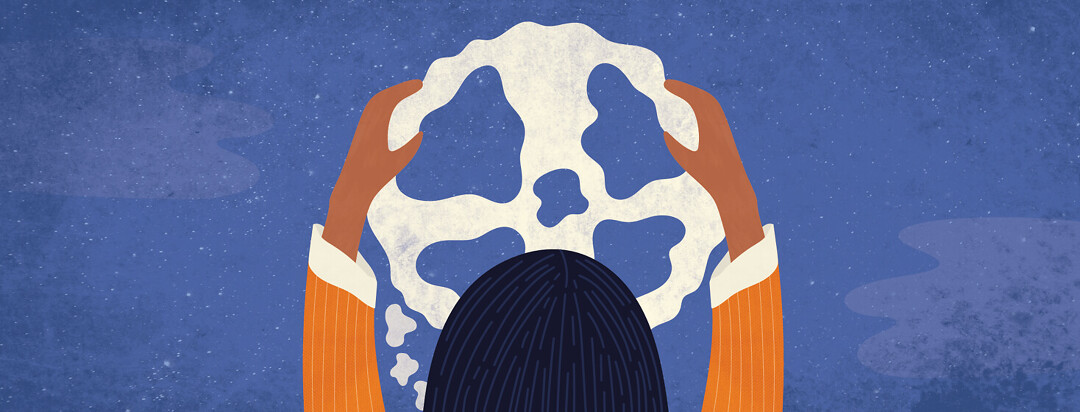Can Lucid Dreaming Fix Sleepless Nights?
When I’ve seen this claim as a sleep health educator, my journalist’s skepticism frequently dismisses such notions about “curing” anything, especially something like insomnia.
But I’m also a lucid dreamer. I’m still intrigued by the possibility that lucid dreaming could fix sleeplessness.
So, curious cat that I am, I checked it out. What exactly is lucid dreaming? And how might it bring relief for insomnia?
What is lucid dreaming?
A lucid dream is a dream in which the dreamer is aware that the dream is taking place while in the act of dreaming. According to the Sleep Foundation, “[T]he sleeper can exercise control over different aspects of their environment.”1
This seems impossible, a plotline stolen from a bizarre movie. Yet, it’s not.
How common is lucid dreaming?
More than half of all adults have encountered at least one lucid dream in their lives; nearly a quarter of people experience at least one lucid dream every month. Not only is lucid dreaming possible, it’s somewhat common and, more importantly, normal.1
Lucid dreams take place mostly during the REM (rapid-eye movement) sleep cycle; consensus suggests they originate as ordinary, non-lucid dreams, which are then triggered into a “hybrid sleep-wake state” by the dreamer, affording them control over the dream narrative.
An example of a lucid dream
I’m a lucid dreamer. I’ve found that, during anxiety dreams, I’m able to recognize them as anxiety dreams while in the act of dreaming. Then I do or think something that relieves the anxiety.
I’ve dreamed, for instance, that the space I’m in, inside the dream, is terribly messy and needs tidying. However, in the dream, I’m expecting a visit at just a moment’s notice from someone who’ll be unhappy about the mess. The source of anxiety isn’t the cleaning, it’s having to deep clean in the space of a heartbeat to please someone else. Eventually, this anxiety arouses me enough while dreaming that I recognize “it’s only a dream.” I may even dream-speak these words aloud.
Changing the narrative
And then, in the dream, I decide to change the narrative by snapping my fingers. After doing this, the space becomes instantly clean. Problem solved! Then I relax and sleep more deeply, without anxiety. It’s a weird, but extremely helpful skill. Honesty, I don’t remember ever not knowing how to lucid dream. Apparently, it runs in the family, though we’re all self-taught.
Learning lucid dreaming techniques
However, if lucid dreaming doesn’t come naturally to you, there are experts who can teach you its techniques.2
Don’t want to invest in a therapist? Want a simpler approach? Check out the Nickelodeon program, Blue’s Clues, which aired an episode in the late 1990s dedicated to lucid dreaming!3
How might lucid dreaming reduce insomnia?
It’s a great question: How are you going to sleep better if you’re not asleep?
By definition, insomnia refers to sleeplessness. But insomnia doesn’t only refer to struggling to fall asleep at the beginning of the night. It also refers to frequent awakenings throughout the night and rising far too early at the end of the sleep period (such as awakening at 3 AM, unable to fall back asleep).
So obviously, lucid dreaming won’t be useful if you can’t fall asleep; it only works after you’ve fallen asleep.
Identifying anxious dreams is key
It turns out that the dream content itself – rooted in anxiety, especially – may be linked to the frequent awakenings that lead to WASO (wake after sleep onset) in people with insomnia.
Dream patterns in people with insomnia
Here’s an interesting fact shared by a recent article in Psychology Today that might shed more light on links between dreaming and insomnia: “Studies show that in general, [people with insomnia] recall dreams more frequently than healthy sleepers.”4 Also: “The dreams of insomniacs have been shown to be more negative and distressing than the dreams of healthy sleepers.”4
Finally: “This has some clinical relevance, given that the emotional content of dreams is directly related to an individual’s mood before and after sleep.”4
Applying lucid dreaming techniques
Fortunately, new insights suggest that anxiety dreams may be addressed through lucid dreaming techniques, based on pilot research published in Behavioral Sleep Medicine.5
These scientists found 48 subjects with insomnia symptoms who weren’t lucid dreamers prior to the study. They spent 2 weeks observing and training these subjects in lucid dreaming techniques. One month after the training, the subjects were asked whether they’d had lucid dreams.
About three-quarters of the subjects said they’d had at least 1. Even better, the subjects generally experienced a drop in insomnia, anxiety, and depression symptoms. Those who’d had lucid dreams enjoyed the greatest improvement.
If you can’t sleep, and you have anxious dreams, you may wish to consider learning how to become a lucid dreamer to reclaim control over your dream narratives so you can get back to sleep.

Join the conversation